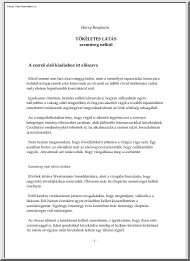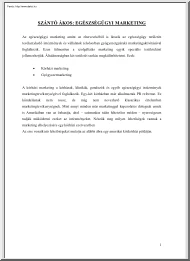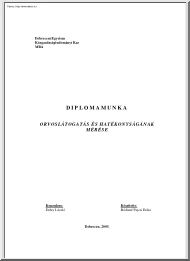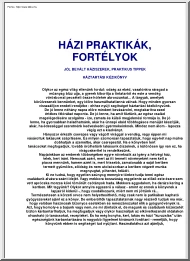Datasheet
Year, pagecount:2000, 1 page(s)
Language:English
Downloads:3
Uploaded:May 13, 2021
Size:2 MB
Institution:
-
Comments:
Attachment:-
Download in PDF:Please log in!
No comments yet. You can be the first!
Content extract
ACCIDENT AND EMERGENCY MEDICINE: AUSTRALIA El| Helicopter emergency medical services he first helicopter flight operations such as urban took place on Sept 14, search and rescue can be 1939, when Igor Sikorprovided. The emergence of sky lifted his open-cockpit VSthe threat posed by terrorist use Antony Nocera 300--a conventional singleof chemical weapons presents rotor model--off the ground in new challenges for health Connecticut, USA. Sikorsky rec0gnised the potential of services around the world. Helicopter emergency medical the rotary-wing aircraft as a platform for humanitarian services are ideally placed to provide medical support to operations. The first helicopter mercy flight occurred only these incidents by the delivery of antidotes and specially 5 years later on Jan 3, 1944, during which blood plasma trained medical personnel to facilitate casualty triage and was ferried frown Lower Manhattan to New Jersey for treatment on site. victims of a steamship explosion. In
1945, the usefulness of Helicopter emergency medical services are potentially rotary-wing aircrafts as a hazardous operations and rescue and medical transport must be conducted with a platform were progressively due regard for safety. Safety defined. The first true revolves around the training helicopter emergency flight of both the medical staff was on Jan 15, 1945, when and the flight crew, good test pilot Floyd Carlson flew management of crew Dr Marriot to a snow-bound resources, and the approfarmhouse in upstate New priateness of equipment to York to treat an injured airthe circumstances of each force test pilot. 2 months individual mission. Concerns later, Carlson rescued a for patients never justify fisherman trapped on an iceplacing pressure on pilots to flow on Lake Erie who had fly against their judgment. been given up for dead. The Practically, safety is a costly ice prevented rescue by boat asset in helicopter operations and was too soft to allow and extends from the
airrescue by any other means. Scene response to a motor-vehicle accident in rural New South worthiness of the aircraft to The first civilian helicopter Wales, Australia the crash-worthiness of the winch rescue was done on medical crew and their Nov 29, 1945, when two seamen were rescued from a equipment. However, the appropriate considerations for sinking barge off the Connecticut coast. safety above competing budget priorities must be part of As the helicopter has continued to evolve, so has the an organisations culture. continuing debate on issues related to its use for medical Helicopter emergency medical services should be rescue and transport, such as medical staffing. In countries regarded as part of the health service. Hospital designs with a low population density, such as Australia, should ensure that helicopter operations can be conducted helicopters staffed with critical-care specialists can deliver a safely, which must include assessment of whether it is critical-care
service over a 200 km radius within 1 hour. appropriate to inclfade a helipad at a particular hospital When this service is combined with the ability to then within the overall needs of the health service. Noise rapidly transport a seriously ill patient back to a tertiary abatement is increasingly emerging as a priority especially hospital, without any reduction in the standard of medical for helicopter emergency medical services on 24-hour care, it creates equity of access to critical-care services that operations. Reducing the impact of aircraft noise on the would otherwise not be possible in a country such as community is an important environmental consideration Australia. Providing critical-care specialist support to small that can influence aircraft selection, flight operational peripheral hospitals is arguably the greatest life-saving role procedures, and the design of physician-staffed helicopters. and siting of helipads. Staffing of winch-equipped helicopters with a On Oct 25,
1972, the day combination of critical-care specialists and senior before Igor Sikorsky died at paramedics allows helicopter emergency services to be the age of 83, he dictated a used for many tasks. This combination of medical skills letter saying: "I always and clinical judgment delivered to the patient in the believed that the helicopter prehospital environment reduces the time to definitive would be an outstanding therapy and allows therapy to be tailored, within the vehicle for the greatest operational circumstances, to the patients needs. In this variety of life-saving miscontext it is the time until patients receive appropriate sions, and now, near the definitive medical therapy, rather than the actual close of my life, I have the prehospital time, that becomes the major determinant in satisfaction of knowing that patients outcome. this proved to be true." Helicopters staffed with critical-care specialists who have The challenge today is not prehospital experience and
an established working to lose sight of Sikorskys relationship with paramedics are in a unique position to vision, and to ensure provide a rapid on-site medical response in the event of a that helicopter emergency multiple casualty incident. With suitable arrangements, services are safely and there might be no need to have hospital disaster medical appropriately used within teams, and a highly trained medical group for specialised the communities they serve. T The Lancet Perspectives • 356 ° December ° 2000 s2
1945, the usefulness of Helicopter emergency medical services are potentially rotary-wing aircrafts as a hazardous operations and rescue and medical transport must be conducted with a platform were progressively due regard for safety. Safety defined. The first true revolves around the training helicopter emergency flight of both the medical staff was on Jan 15, 1945, when and the flight crew, good test pilot Floyd Carlson flew management of crew Dr Marriot to a snow-bound resources, and the approfarmhouse in upstate New priateness of equipment to York to treat an injured airthe circumstances of each force test pilot. 2 months individual mission. Concerns later, Carlson rescued a for patients never justify fisherman trapped on an iceplacing pressure on pilots to flow on Lake Erie who had fly against their judgment. been given up for dead. The Practically, safety is a costly ice prevented rescue by boat asset in helicopter operations and was too soft to allow and extends from the
airrescue by any other means. Scene response to a motor-vehicle accident in rural New South worthiness of the aircraft to The first civilian helicopter Wales, Australia the crash-worthiness of the winch rescue was done on medical crew and their Nov 29, 1945, when two seamen were rescued from a equipment. However, the appropriate considerations for sinking barge off the Connecticut coast. safety above competing budget priorities must be part of As the helicopter has continued to evolve, so has the an organisations culture. continuing debate on issues related to its use for medical Helicopter emergency medical services should be rescue and transport, such as medical staffing. In countries regarded as part of the health service. Hospital designs with a low population density, such as Australia, should ensure that helicopter operations can be conducted helicopters staffed with critical-care specialists can deliver a safely, which must include assessment of whether it is critical-care
service over a 200 km radius within 1 hour. appropriate to inclfade a helipad at a particular hospital When this service is combined with the ability to then within the overall needs of the health service. Noise rapidly transport a seriously ill patient back to a tertiary abatement is increasingly emerging as a priority especially hospital, without any reduction in the standard of medical for helicopter emergency medical services on 24-hour care, it creates equity of access to critical-care services that operations. Reducing the impact of aircraft noise on the would otherwise not be possible in a country such as community is an important environmental consideration Australia. Providing critical-care specialist support to small that can influence aircraft selection, flight operational peripheral hospitals is arguably the greatest life-saving role procedures, and the design of physician-staffed helicopters. and siting of helipads. Staffing of winch-equipped helicopters with a On Oct 25,
1972, the day combination of critical-care specialists and senior before Igor Sikorsky died at paramedics allows helicopter emergency services to be the age of 83, he dictated a used for many tasks. This combination of medical skills letter saying: "I always and clinical judgment delivered to the patient in the believed that the helicopter prehospital environment reduces the time to definitive would be an outstanding therapy and allows therapy to be tailored, within the vehicle for the greatest operational circumstances, to the patients needs. In this variety of life-saving miscontext it is the time until patients receive appropriate sions, and now, near the definitive medical therapy, rather than the actual close of my life, I have the prehospital time, that becomes the major determinant in satisfaction of knowing that patients outcome. this proved to be true." Helicopters staffed with critical-care specialists who have The challenge today is not prehospital experience and
an established working to lose sight of Sikorskys relationship with paramedics are in a unique position to vision, and to ensure provide a rapid on-site medical response in the event of a that helicopter emergency multiple casualty incident. With suitable arrangements, services are safely and there might be no need to have hospital disaster medical appropriately used within teams, and a highly trained medical group for specialised the communities they serve. T The Lancet Perspectives • 356 ° December ° 2000 s2




 When reading, most of us just let a story wash over us, getting lost in the world of the book rather than paying attention to the individual elements of the plot or writing. However, in English class, our teachers ask us to look at the mechanics of the writing.
When reading, most of us just let a story wash over us, getting lost in the world of the book rather than paying attention to the individual elements of the plot or writing. However, in English class, our teachers ask us to look at the mechanics of the writing.